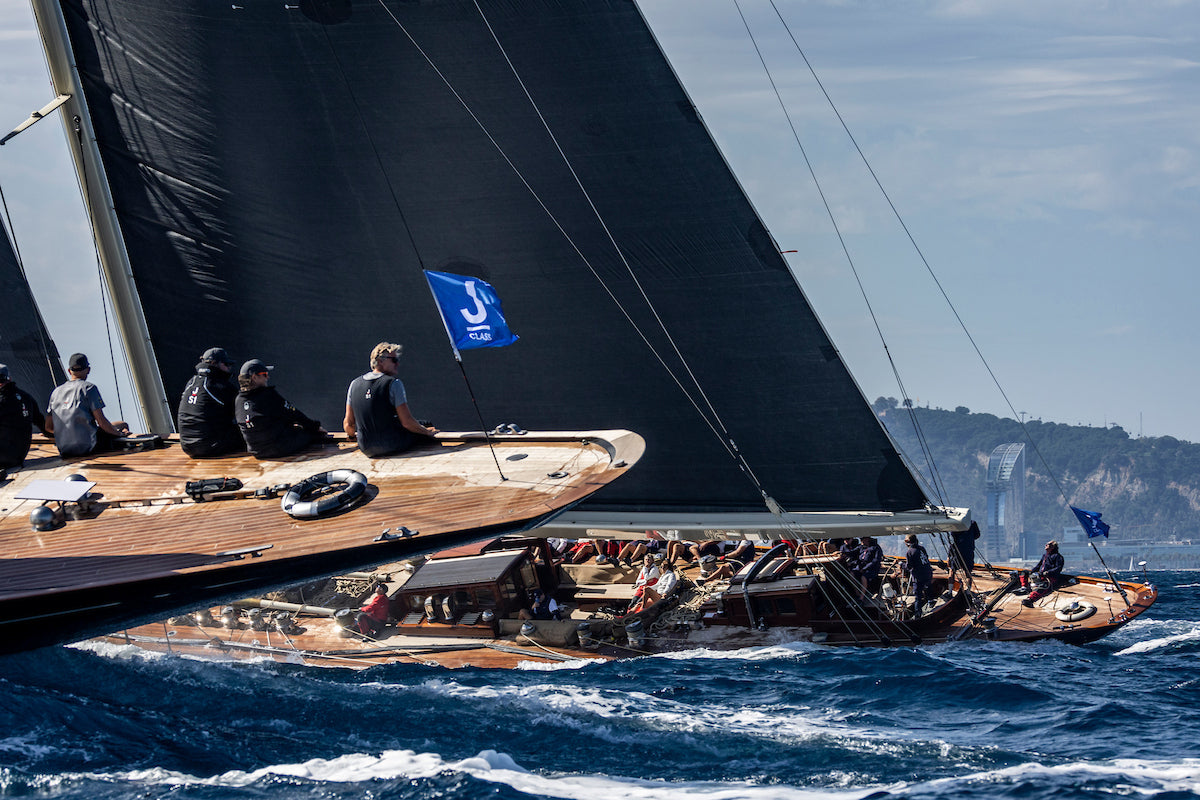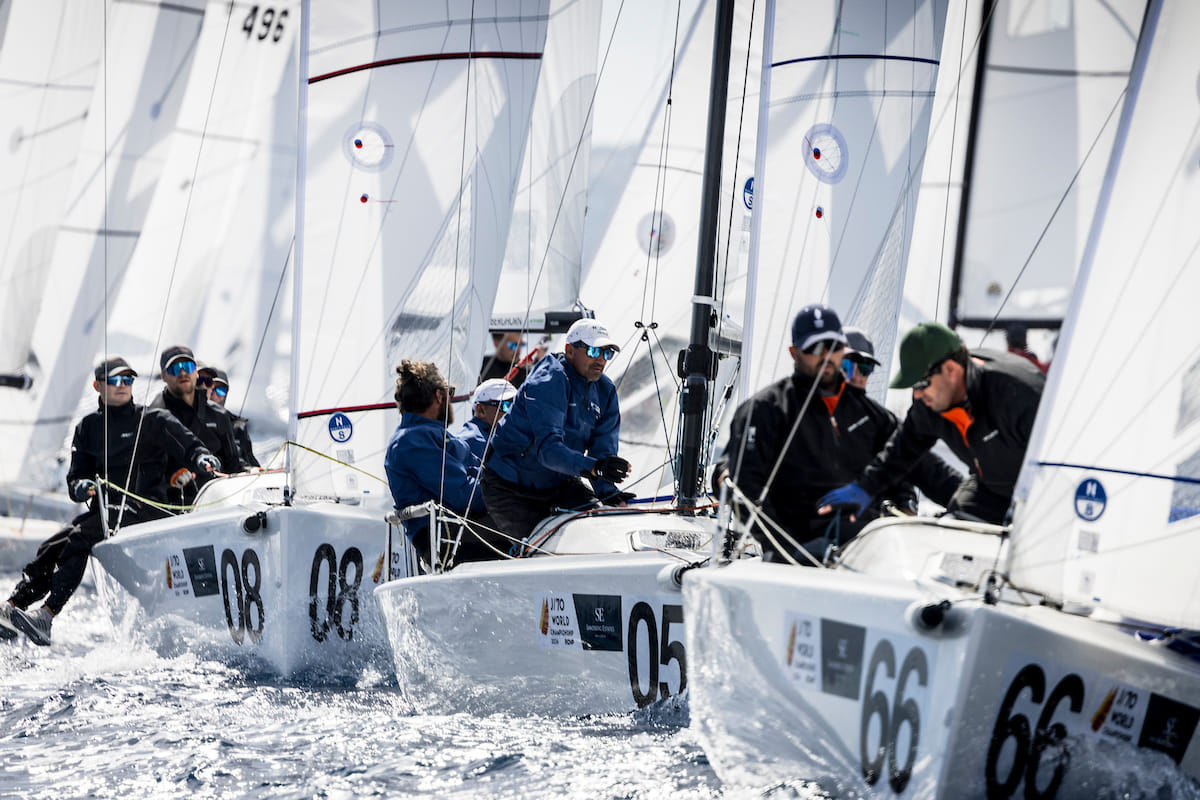2018-19 VIPER WINTER SERIES - EVENT 1
CLASS NEWCOMERS WIN VIPER WINTER SERIES’ FIRST EVENT
Interview With Winners Patrick Wilson and Chris Stocke
The first stop of the 2018-19 Viper 640 Sarasota Winter Series was sailed over the weekend of December 15-16 on the waters of the Sarasota Bay. Unfortunately there wasn’t enough breeze to run races on Sunday, but the Race Committee did a fantastic job getting in 4 races in tricky light air conditions on Saturday. North Sails customers were faster than ever – dominating the event finishing 1,2,3,4,5,6. Chris Stocke and Patrick Wilson busted out their brand new Viper sails for the very first time and came away with an impressive win against a very competitive fleet including four previous North American Champions. Our Viper Expert Zeke Horowitz had a conversation with Chris and Patrick to find out just how they managed to pull it off.
You guys are brand new to the Viper Class. What was it that inspired you to choose the Viper?
Patrick: Well, Chris and I do a lot of sailing together in the J70 and have become good friends over the years. When we began discussing a boat to get on our own, the Viper quickly came to the top of the list. We knew we wanted something modern with an a kite able to plane, with an established fleet of good sailors, as well as a class where we could have fun with the boats and the people. So far, the Viper has definitely met and exceeded expectations.
Chris: We set out to find a boat that was not only fast but affordable. With the Worlds being in Long Beach. which is a great place to sail, we settled on the Viper.
This was your very first regatta in the boat and you came away with the win in a pretty tough fleet. What are 3 tips you would give to someone who is going to sail their first Viper regatta?
Patrick’s Tips:
- Don’t be afraid to ask questions. We found that we had and still do have a lot to learn. Everyone in the fleet was willing, able and ready to answer and explain all of our questions and really speed up our learning curve.
- Stick to the basics. Starting with a new boat and a new class can feel overwhelming. For this event we tried to focus on starting well, sailing smart, and keeping it simple.
- Enjoy it. Our main reason for getting into the class is to have FUN.
Chris’ Tips:
- Have fun.
- Stick to the North Sails Tuning Guide, it seems to put you in the ballpark to have top notch speed right off the bat.
- Ask the fleet lots of questions, there are so many different modes you can sail in a boat like this and the top guys have seemed to have figured them out and are happy to help!
What resources did you utilize to make sure your brand new boat would be set up correctly for your first day or racing?
Patrick: For me the biggest hurdle to overcome on the first day is learning how to tune and set up the sails correctly. We recently purchased a full set of North Sails and we spent a few hours following the Setup and Tuning Guide, step by step. It is a well laid out resource that gives a great process of setting up your boat from start to finish. From mast butt position, spreader angle, rig tension and mast chocking, you guys have done an amazing job of giving anyone the formula for achieving speed right out of the box.
Chris: In order to make sure the new boat was ready to race we talked with the class reps. The North sails seemed pretty dialed in right out of the box.
We had mostly light air for this regatta. What would be your number one tip for boat speed upwind? How about downwind?
Patrick: I would say that upwind in light air we learned quickly just how flat you could sail the boat. As for downwind, we used other boats as relative gauges for learning modes. Weight placement seemed critical as the further forward you could get the better.
Chris: With the regatta being mostly light air we forced hard on always keeping the boat moving. Downwind was tricky being that a couple more knots changes your angle dramatically. Communication on pressure differences made finding modes easier.
I observed that the top boats at this regatta really got separated from the rest of the fleet with their boat handling skills. Walk us through your timing and procedure to execute a good light air roll tack.
Patrick: Timing and having all three crew members move at the same time is critical to executing a good light air roll tack. As the driver begins to slowly turn the boat, the crew needs to have patience and not roll until the boat is head to wind. Having one person to count down and call the roll can be quite helpful in this. Once the boat is approximately at a close hauled course on the new tack we would flatten as a team. Two critical things as the flatten happens are:
- The driver has the tiller straight
- The crew flattens in a “finesse” fashion paying close attention not to over flatten the boat.
Having the same person call both the roll and flatten works well and keeps the team moving as one.
Chris: Roll tacking these boats is somewhat challenging because they are quite wide. Finding the proper footwork in tacks as well as exit angles is what we were focusing on.
Chris, you grew up sailing on Sarasota Bay. Did local knowledge come into play at all with your tactical decisions? Any keys to look for on the Sarasota Bay that might help the fleet know what to look for?
Chris: Sarasota is a very dynamic place to sail. You have to really look up the course. Most of the time the breeze in the morning has some sort of East in it and in the afternoon it tends to try and find its was to the North West. Keeping this in mind helps because you can start to pick up patterns and small shifts as it starts to veer.
| 2018-19 Viper 640 Winter Series | ||
| EVENT #1 – Teams Powered by North Sails | ||
| 1 | Christopher Stocke | |
| 2 | Marcus Eagan | |
| 3 | Peter Beardsley | |
| 4 | Zeke Horowitz | |
| 5 | Jay Golison | |
| 6 | Nick Amendola | |



























